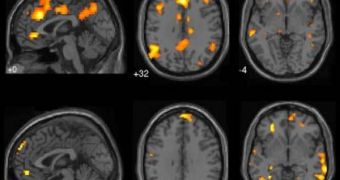University of British Columbia (UBC) experts announce in a new scientific research that the brain areas thus far believed to be involved in daydreaming are, in fact, far more active than thought. Their investigation has also revealed the fact that certain brain portions, thus far thought to go dormant when people's mind wonders, are actually more active than usual during these episodes. The UBC team was led by UBC Department of Psychology expert, Professor Kalina Christoff, and the finds are detailed in a paper published in this week's issue of the journal Proceedings of the National Academy of Sciences.
“Mind wandering is typically associated with negative things like laziness or inattentiveness. But this study shows our brains are very active when we daydream – much more active than when we focus on routine tasks,” Christoff, who has also been the lead author of the study, says. The experts used an observation technique known as functional Magnetic Resonance Imaging (fMRI) for their study. This machine has the ability to show brain areas basically “lighting up” or “turning off,” depending on whether they are active or dormant. In addition, it allows for almost real-time observations on a test subject's brain.
As a reference point, the researchers employed readings recorded while the patients sat in the fMRI machine, and pushed a button when numbers appeared on a screen. Their brain activities were monitored second after second, and stored for comparison. In addition, the participants' performances were also assessed via their own evaluations, as well as based on the scores they attained at the button-pressing game. Christoff says that daydreaming, a contemplative state in which the brain wonders, occupies about one third of every individual's life, and, as such, merits more investigation.
For example, the study has revealed that the “executive network” in our brains, usually dealing with high-level, complex problem-solving, is also highly active in daydreaming. This network consists of the lateral prefrontal cortex (PFC) and the dorsal anterior cingulate cortex. In addition to these regions, the wondering mind also activates the “default network,” which is made up of the medial PFC, the posterior cingulate cortex and the temporoparietal junction. The later network has been thus far believed to be the only segment of the brain active during daydreaming.
“This is a surprising finding, that these two brain networks are activated in parallel. Until now, scientists have thought they operated on an either-or basis – when one was activated, the other was thought to be dormant,” Kalina Christoff shares. “When you daydream, you may not be achieving your immediate goal – say reading a book or paying attention in class – but your mind may be taking that time to address more important questions in your life, such as advancing your career or personal relationships,” or even solving more complex problems.

 14 DAY TRIAL //
14 DAY TRIAL //